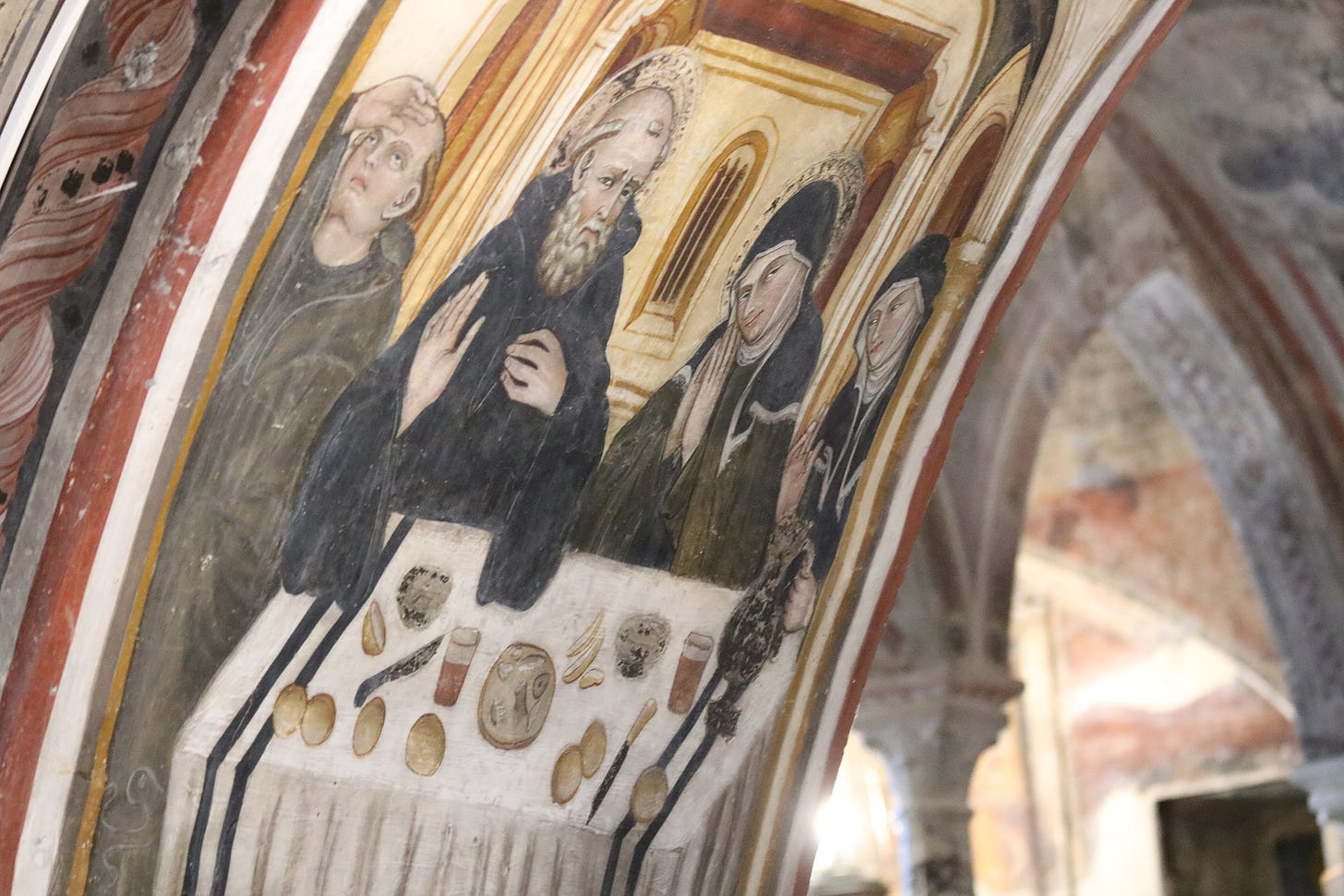My premise for this conversation about the Fifth Kind of Monk is that we have grown beyond Benedict’s acceptable two kinds of monks as well as his detestable two kinds of monks and are seeing the emergence of a Fifth Kind of Monk, a monk who doesn’t necessarily live in a physical monastery and yet is mutually informed by, shaped, and becomes whole in relationship with other monks and seekers, including cenobitic monks.
However monks live in relation to other monks following the time-tested principles of Benedict’s Rule, they will continue to uncover new ways of living those principles in the twenty-first century. Their ideas will manifest in will new expressions of relational living, in creative ways of calling one another to accountability, and in experimenting and evaluating as they find their place in the world.
We live in a time and a place
Benedict was shaped by early theologies as well as the cultural worldview, economic structures, and politics of sixth century Italy. He and his monks lived shortly after the fall of the Roman Empire when violent bands roamed and pillaged the continent. They, like us, were situated in a particular time and place. But Benedict was also a mystic, a sort of spiritual time traveler who grasps universal truths and meanings and articulates what they see for the rest of us. Benedict’s insights into human nature that shape the core principles of his Rule transcend his historical setting and provide a pattern for living well with self, the human and nonhuman worlds, and God.
The evolving task of the Fifth Kind of Monk will be to take Benedict’s core teachings and apply them anew for a kind of monk in a kind of world that did not exist in the sixth century. I see this exploration as an evolution springing from the timeless principles of the Rule, not a sifting through sixth century practices to find a creative overlay to support twenty-first century practices.
But first the Fifth Kind of Monk will need to study the Rule and its 1,500-year trajectory so that they are able to clearly articulate its core principles. Then, in ongoing creative tension with other monks and seekers, reflect on and begin to embody those principles to create expressions of the Rule that speak to seekers today. Benedict didn’t start his communities by writing a Rule. He started by living in a way that would bring him closer to God, his source of life and meaning. That eventually translated into living consciously with others, entering into the daily struggles of human relationships, living, learning, and seeking God with others. Only then did he write what he saw as key to a meaningful life.
The community narrative
Cenobitic monks by definition live in a monastery, a not uncommon lifestyle in the sixth century. In fact, in a time of societal breakdown, the communal life and the enclosure of the monastery offered security for the monks, their local community, and pilgrims.
It was an agrarian, mostly uneducated society; resources were shared in the subsistence economy, pillaging and violence were the norm. This is the milieu in which Benedict wrote about a common life of work and prayer and the attitudes, practices, and disciplines necessary to grow and strengthen it.
Today, what generally drives our world is individualism, more wealth for the wealthy, and the subjugation of nature for our enrichment. How do we reconcile sixth century teaching with twenty-first century reality and create community today?
“The difficulty lies not in the new ideas, but in escaping from the old ones,” write David Bollier and Silke Helfrich in Free, Fair, and Alive: The Insurgent Power of the Commons. “New truths often hide in plain sight.” Which is where the Fifth Kind of Monk is—in plain sight, still mostly unrecognized both to themselves and to today’s cenobitic monks. To see more clearly, we must escape the old ideas about what monastic community looks like that, even though they served us well in the past, are no longer viable for new generations.
I received an email from a friend in another city after she first read about “The Fifth Kind of Monk.” She recognized herself as the Fifth Kind of Monk. A small, diverse, hospitable, and loving community has grown around this monk and her home in the past thirty years and their spiritual energy ripples through their local community. There are many like her who live with and for others as they seek God in their ordinary daily lives.
They are raising our spiritual standard of living and offering those who surround them the opportunity to become more human human beings. They are in social movements and working for a new economy and saving the planet. They are seeking peace and working for just wages and affordable housing and welcoming strangers. They are reading and praying and creating a new kind of community, a networked community, that will be there for each other in new ways. They are creating new connections and meanings for monasteries.
And Benedict the mystic, Benedict the intuitive, Benedict the practical one, continues to offer a framework for the spiritual connections that will sustain these Fifth Kind of Monks. Spiritual seekers who can go it alone, the hermits, are rare, as Benedict says at the beginning of his Rule. Most of us need a community, need relationships, need some degree of physicality, need a spiritual core around which to settle. The Benedictine community can be big enough to embrace the Fifth Kind of Monk, oblates, cenobites, and pilgrims passing through. Just as Benedict’s physical monasteries provided safe havens as well as spiritual sustenance in the sixth century, so today’s reimagined Benedictine communities will do the same.




